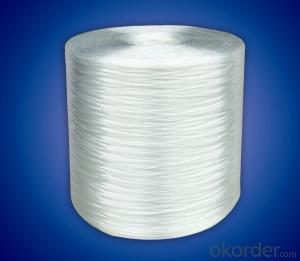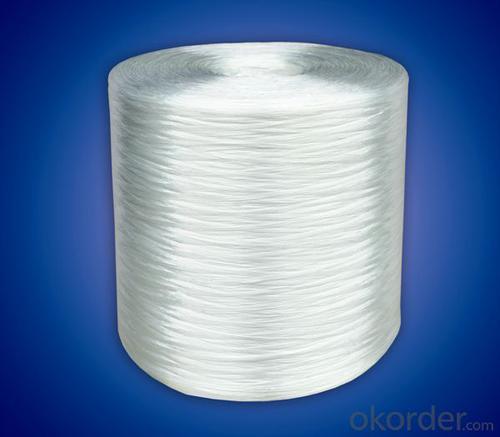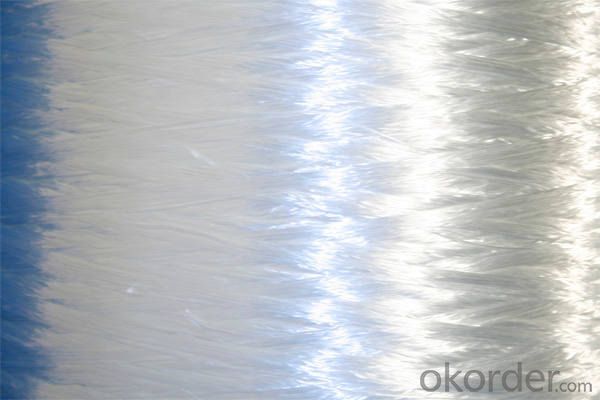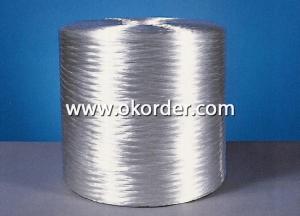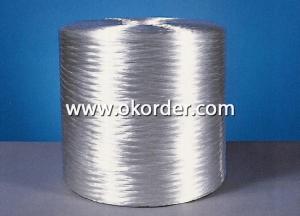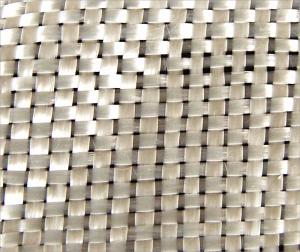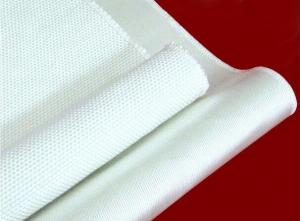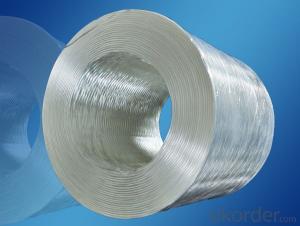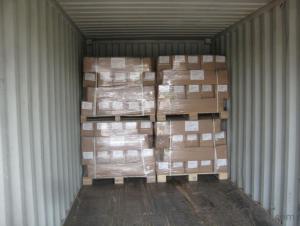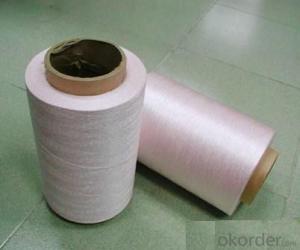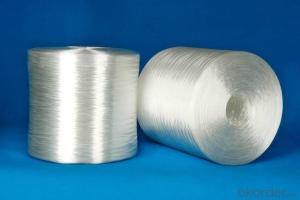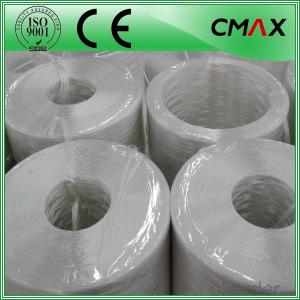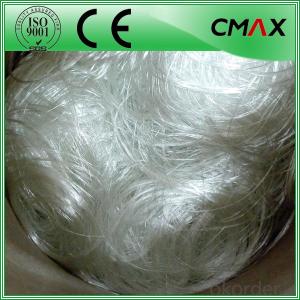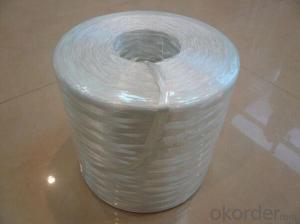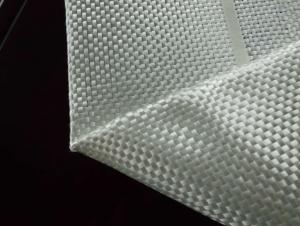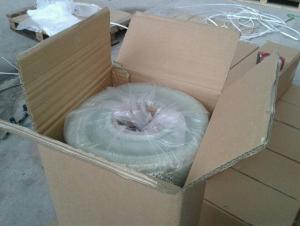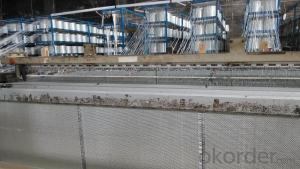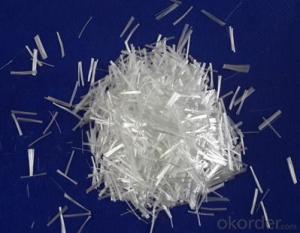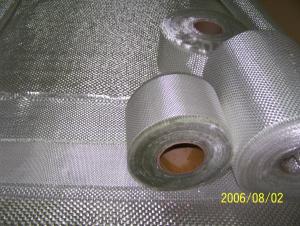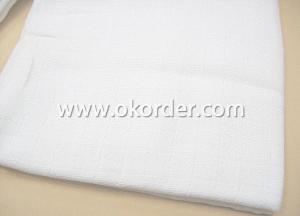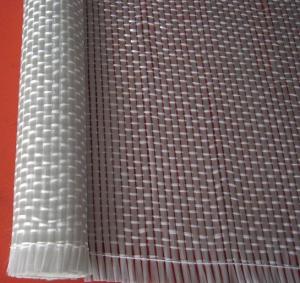Direct Roving for weaving
- Loading Port:
- China Main Port
- Payment Terms:
- TT OR LC
- Min Order Qty:
- -
- Supply Capability:
- -
OKorder Service Pledge
OKorder Financial Service
You Might Also Like
Direct Roving for weaving |
Direct Roving for weaving is compatible with unsaturated polyester, vinyl ester and epoxy resins. Its excellent weaving property makes it suited for fiberglass product, such as roving cloth, combination mats, stitched mat, multi-axial fabric, geotextiles, molded grating. The end-use products are widely used in building & construction, wind power and yacht applications. |
Product No. | Nominal Linear Density, tex | Product Features | Resin Compatibility | Applications |
306A | 800、900、1000、1200、1500、1700、2400、4800 | High strand strength; Low fuzz | Asphalt, | Suitable in manufacture of geotextiles, used to reinforce high-speed road |
328 | 2000 | Compatible with epoxy resin, Fast wet out, Excellent mechanical property of the composite product, High modulus(particularly high tensile strength) | Epoxy resin | Suitable in manufacture of UD or multiaxial fabric, used as reinforcement of large wind energy blade by vacuum infusion process |
396 | 300、600、735、1200、2000、2400 | Compatible with multiple resin system; Excellent mechanical properties of the composite product | Epoxy resin, Polyester | Suitable in manufacture of UD or multiaxial fabric, used as reinforcement of large wind energy blade by prepreg process |
398 | 1200、2400 | Compatible with epoxy resin; Excellent weaving property; Excellent mechanical properties of the composite product; High modulus( particularly high compressive strength) | Epoxy resin | Suitable in manufacture of UD or multiaxial fabric used as reinforcement of large wind energy blade by vacuum infusion process |
386T | 200、300、600、1200、2400、4800、9600 | Low fuzz; Excellent weaving property;Excellent mechanical property of the composite products | Unsaturated polyester | Suitable for manufacture of UD or multiaxial fabric used as reinforcement of large polyester wind energy blade |
312 | 100、136、200、275、300 | Excellent weaving property; Excellent mechanical properties of the composite product | Unsaturated polyester, vinyl ester and epoxy resins | Suitable in manufacture of light weight roving cloth and multiaxial fabric |
320 | 1200、2000、2400 | Compatible with multiple resin system; Excellent weaving property; Excellent mechanical properties of the composite product | Epoxy resin, Polyester | Suitable in manufacture of UD or multiaxial fabric, used as reinforcement of large wind energy blade by vacuum infusion process and prepreg process |
386 | 200、300、600、1200、2400、4800、9600 | Compatible with matrix resins; Excellent mechanical properties of the composite product | Unsaturated polyester, vinyl ester and epoxy resins | Suitable in manufacture of roving cloth used as reinforcement for pipes, yachts |

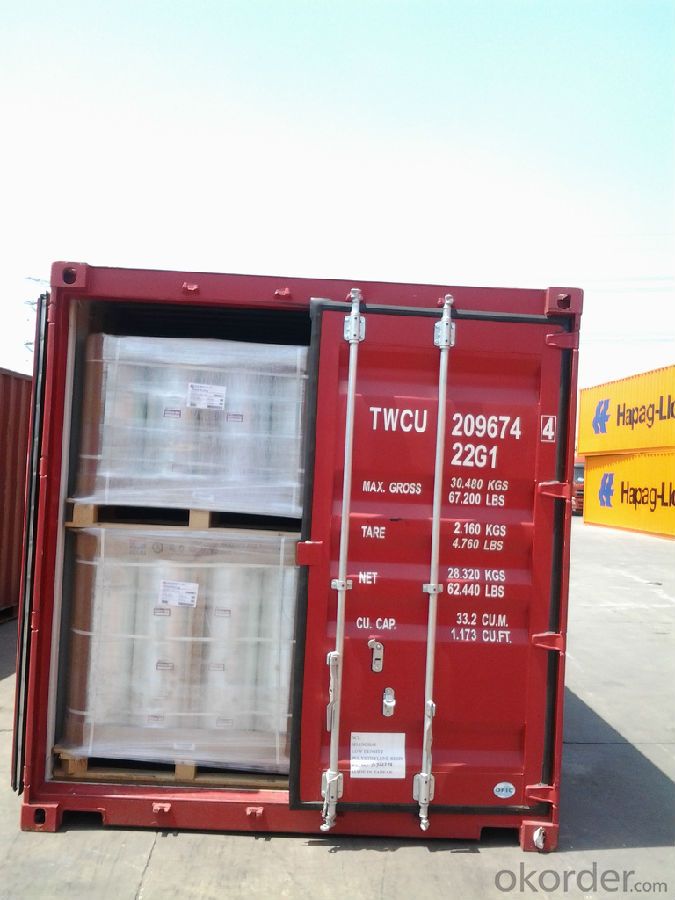
- Q: How many specifications of glass fiber?
- According to fiber diameter, there are many varieties and specifications and spun yarn is used for industry and electron in term of application. There are many specifications including E series, G series, D series and H series.
- Q: How to produce glass steel?
- Material: Glass cloth, resin, curing agent tool: Glass?pane or polyester i thin?film process: According to the specifications for glass?reinforced?plastics, glass plane or polyester i thin film should be prepared and then you should tail glass cloth in accordance with requirements. At first, you should compound resin, and then you should put cloth that already have been tailed on the glass pane and cover it with compounded resin until its thickness meets requirements after removing all bubbles in it. After that, you should continue to cover it with polyester i thin film without bubbles and put a piece of glass on it if you want it more neat. A new product is ready after taking off the glass fiber reinforced plastics and trimming it carefully.
- Q: Fiber has the difference between twist and twist
- Twist refers to the twist of a single yarn in a single yarn or strand. The inclination of the single yarn from the lower right corner to the upper left is called "S twist". The twist from the lower left corner to the upper right is called the Z twist
- Q: What parts must used fiber reinforced concrete?
- Is mainly used for the tensile and bending resistance parts.
- Q: What is the difference glass fiber roving and fine yarn ? Does the equipment used for production have any difference.
- 6 microns non-alkali, 9 micron twistless roving (bulk yarn), 80 alkali , 30 twist roving ans 21 medium alkali. It is a glass fiber integrated production enterprises combined management, scientific research and development. The company has advanced production equipment and strong technical force. Main production includes 30 alkali-free glass fiber yarn and 40 fine yarn with annual production of 1500 tons.
- Q: How to maintain the GRC exterior wall decoration components?
- According to DST, The texture of GRC wall decoration component must be alkali resistant glass fiber for reinforcement with right angle.
- Q: How to produce 0.3 mm glass fiber Chopped strand? What kind of glass fiber yarn is better?
- with strong ability in grinding). And when producing the asbestos shingle, there should be a progress of mixing the materials. The short fibercan be morceled by chopping machine or manually. The reason for short fiberis is avoid all fiber winding and fiber grinding (the main component of glass fiber is silica, and offal of glass fiber used for asbestos shingle. It is low cost, and do not need any special requirements. For the current market.
- Q: Production process of glass fiber tube
- The tube is made in continuous movement of mandrel. It should be feed into steel mould fixed in bearing. After continuous filament winding and centrifugal casting process finishes,the number of pipe manufacturers using reciprocating fiber winding process is more than that of other two production technology. After the resin in products has been solidified, you should inject unsaturated resin with catalyst at the one side of steel mould. This process is that pipe passes through a feeding station whcih aims to supply resin presoak twistless roving. There are mainly three manufacturing techniques of glass fiber pipe. Reciprocating fiber winding technology (belonging to the fixed length method). The main material includes glass fiber reinforced materials and sand. Auxiliary angle (wingding angel) is controlled by the ratio of impregnating vessel movement speed and mandrel rotate speed. Pipe usually solidifies under high temperature. With the help of centrifugal force, its applicability is very good. Continuous filament winding process(belongs to continuous method). Impregnating vessel movement is controlled by computerization machine. With the number of the layers increases gradually, inner tube form a smooth plane due to the centrifugal force and mandrel gets out of glass?reinforced?plastics pipe. Centrifugal casting process (belonging to the fixed length method). Tube made in this way, is also known as glass fiber reinforced plastic sand pipe. Reciprocating filament winding process In this process
Send your message to us
Direct Roving for weaving
- Loading Port:
- China Main Port
- Payment Terms:
- TT OR LC
- Min Order Qty:
- -
- Supply Capability:
- -
OKorder Service Pledge
OKorder Financial Service
Similar products
Hot products
Hot Searches
Related keywords
